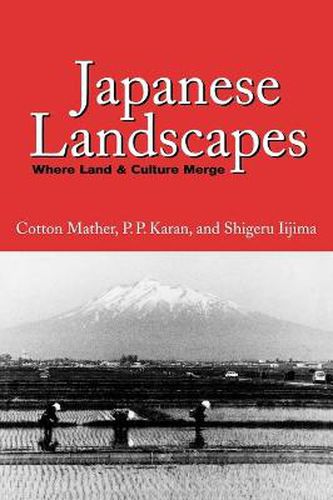Readings Newsletter
Become a Readings Member to make your shopping experience even easier.
Sign in or sign up for free!
You’re not far away from qualifying for FREE standard shipping within Australia
You’ve qualified for FREE standard shipping within Australia
The cart is loading…






From the busy streets of Tokyo to the secluded shores of Kyushu, from the volcanoes of Hokkaido to the temples of Kyoto, the treasured landscapes of Japan are brought to life in this concise visual guide. Drawing upon years of observation, Cotton Mather, P.P. Karan, and Shigeru Iijima explore the complex interaction of culture, time, and space in the evolution of landscapes in Japan. The authors begin with a discussion of the landscape’s general characteristics, including paucity of idle land, scarcity of level land, and its meticulous organization and immaculate nature. They then apply those characteristics to such favorite subjects as home gardens, sculpted plants, and flower arrangements, but also to more mundane matters such as roadside shoulders, utility lines, and walled urban areas. This unique blending of physical and social sciences with humanities perspectives offers a unified analysis of the Japanese landscape.
$9.00 standard shipping within Australia
FREE standard shipping within Australia for orders over $100.00
Express & International shipping calculated at checkout
From the busy streets of Tokyo to the secluded shores of Kyushu, from the volcanoes of Hokkaido to the temples of Kyoto, the treasured landscapes of Japan are brought to life in this concise visual guide. Drawing upon years of observation, Cotton Mather, P.P. Karan, and Shigeru Iijima explore the complex interaction of culture, time, and space in the evolution of landscapes in Japan. The authors begin with a discussion of the landscape’s general characteristics, including paucity of idle land, scarcity of level land, and its meticulous organization and immaculate nature. They then apply those characteristics to such favorite subjects as home gardens, sculpted plants, and flower arrangements, but also to more mundane matters such as roadside shoulders, utility lines, and walled urban areas. This unique blending of physical and social sciences with humanities perspectives offers a unified analysis of the Japanese landscape.